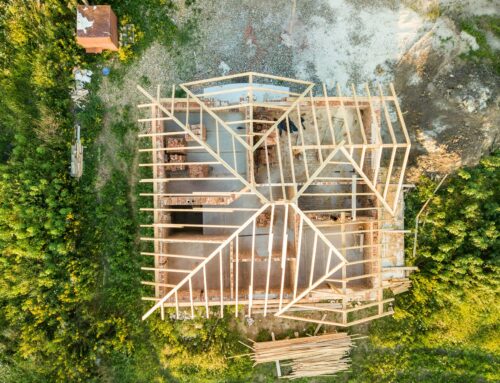Severe weather conditions, such as storms, hurricanes, and gale-force winds, are inevitable in Fairfield and New Haven County, Connecticut. These extreme events can damage your property, especially if your trees are not adequately prepared to withstand the forces of nature. As a homeowner, it’s crucial to be proactive in maintaining your trees to minimize the risk of storm damage and ensure the safety of your loved ones and your property. JNP Tree Removal, LLC, a trusted business licensed and insured in Bridgeport, Connecticut, can help guide you through the process of strengthening your trees against storms with over 8 years of professional experience in hazardous tree removal and landscape maintenance.
In this educational blog, we will provide valuable insights and tips on how you can prepare your trees to weather severe storms and minimize the potential for tree-related storm damage. We will explore the essential measures for maintaining healthy trees, practical steps to support weakened trees, and guidelines on how to identify and address potential hazards on your property. Equipped with this knowledge, you can make informed decisions to strengthen your trees against harsh weather conditions and secure your property in Fairfield and New Haven County.
Discover effective methods for protecting your trees and property against storm damage, and ensure that you are well-prepared for the powerful forces of nature in Fairfield and New Haven County, Connecticut. By investing time and effort into maintaining your trees, you can mitigate the risks associated with severe weather and preserve the beauty and value of your property.
1. Maintain Tree Health and Structural Integrity
Healthy trees are more likely to endure the harsh effects of severe weather, making it paramount to prioritize their care and maintenance. By adhering to the following practices, you can ensure strong, resilient trees that are better equipped to resist damage during storms:
– Regular pruning: Regularly remove dead, weak, or crowded branches to reduce vulnerability to wind damage and increase airflow through the tree canopy.
– Pest and disease control: Periodically inspect your trees for signs of infestation or illness, and treat any issues promptly to preserve tree vitality and minimize the risk of structural weakness.
– Watering and fertilization: Sufficient watering and fertilization provide the necessary nutrients for healthy growth, improving tree resistance to environmental stressors like storms.
2. Strengthen Weak or Vulnerable Trees
Some trees may require additional support to prevent storm damage, such as those with co-dominant trunks, large overhanging limbs, or weak branch attachments. Consider implementing these measures to reinforce tree stability:
– Cabling and bracing: Supporting weak branches or trunk structures with cables or braces can redistribute weight and strengthen potentially hazardous trees, minimizing the risk of limb or trunk failure during storms.
– Root collar excavation: Exposing a tree’s root collar can encourage proper root growth and improve overall tree stability. This process may require a professional arborist’s assistance, as improper exposure can damage tree roots and cause additional harm.
– Crown reduction: Reducing a tree’s overall size by selectively pruning its canopy can help reduce wind resistance, offering a more stable base during high winds.
3. Identify and Address Potential Hazards
Detecting potential hazards within your property before storms strike is a crucial proactive measure to minimize damage. Regularly assess your trees for the following indicators of risk:
– Cracks or splits in trunks or branches: These may signal weakened wood that could lead to branch failure or trunk collapse during storms.
– Dead or decayed wood: Rotten wood is more susceptible to breakage, posing risk to structures and people during heavy winds.
– Leaning trees: Trees that lean excessively or have exposed roots can indicate destabilization and the potential for failure during severe weather.
Seek professional assistance, such as JNP Tree Removal, LLC, to assess and address any identified threats to prevent further risks to your property and loved ones.
4. Prepare Your Property for Severe Weather
Taking extra precautions to protect your home and landscape during storm season can lessen the impact of potential tree-related storm damage. Some essential preparations include:
– Create a storm-ready landscape: Strategically plan your landscape by planting trees with strong wood and wind resistance, such as oaks or holly, and properly spacing trees to reduce the chances of toppling.
– Keep foliage away from structures: Trim any branches hanging over your home, driveway, or other structures that could be damaged if limbs were to fall during a storm.
– Secure outdoor items: Tie down or store loose objects, such as patio furniture, lawn ornaments, and tools, to prevent them from becoming projectiles during high winds.
Conclusion
By investing in proactive tree care and storm preparation, homeowners in Fairfield and New Haven County, Connecticut, can significantly reduce the risk of tree-related storm damage and ensure a safer, more secure property. Follow the tips outlined in this blog to maintain tree health and structural integrity, strengthen weak or vulnerable trees, identify and address potential hazards, and prepare your property for severe weather.
JNP Tree Removal, LLC is committed to helping homeowners in Fairfield and New Haven County safeguard their properties through expert tree care services. Our team of professionals will assess your trees and recommend the best course of action to encourage health, stability, and storm resilience. By partnering with JNP Tree Removal, LLC, you can trust your property to be well-maintained and protected, preserving its beauty, value, and security for years to come. Ask us about our tree services today!




